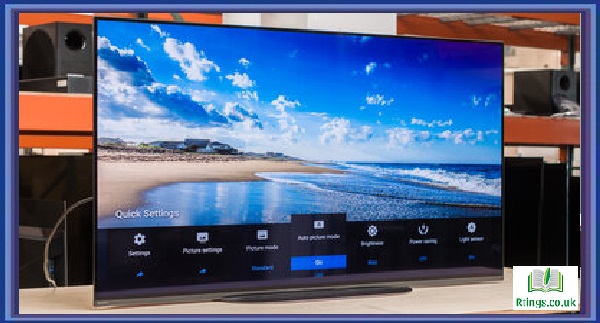In an era of rapid technological advancement, how we interact with devices and technology is evolving. One of the most transformative innovations in recent times is voice control. Voice control harnesses the power of speech recognition technology to enable hands-free and intuitive interaction with a wide range of devices and systems. From smartphones to smart homes, cars, and even healthcare applications, voice control is revolutionizing the way we communicate and navigate our increasingly interconnected world. In this comprehensive exploration, we will delve into the significance of voice control, its underlying technology, applications across various domains, benefits, challenges, and potential for the future.
Understanding Voice Control
Voice control is a technology that allows users to operate devices, execute commands, and perform tasks using spoken language. It leverages sophisticated speech recognition algorithms to convert spoken words into text, which is then interpreted and acted upon by the device or system. This technology has gained immense popularity due to its convenience and accessibility, as it eliminates the need for physical inputs like keyboards or touchscreens.
The Technology Behind Voice Control
At the heart of voice control lies speech recognition, a complex field of artificial intelligence and machine learning. Speech recognition systems employ acoustic and language models to decipher spoken language. The process involves several key steps:
Acoustic Analysis
Speech recognition systems analyze the audio input, breaking it down into phonemes (distinct speech sounds). Acoustic models match these sounds to known phonetic patterns.
Language Modeling
Language models predict the sequence of words most likely to follow a given set of words. This contextual understanding enhances the accuracy of recognizing spoken phrases.
Decoding and Interpretation
The system decodes the audio input and produces the corresponding text output using the data from acoustic and language models. This output is then used to perform the desired action or task.
Applications Across Domains
Voice control’s influence extends across various domains, transforming how we interact with technology and enhancing user experiences.
Consumer Electronics
Voice-activated virtual assistants like Amazon’s Alexa, Apple’s Siri, and Google Assistant have become integral to smart homes, enabling users to control lights, thermostats, and entertainment systems with voice commands.
Automotive Industry
Voice control is a staple in modern vehicles, allowing drivers to make calls, send texts, navigate, and adjust settings without taking their hands off the wheel.
Healthcare and Accessibility
Voice control benefits individuals with disabilities, enabling hands-free communication, control of assistive devices, and access to information without relying on traditional interfaces.
Productivity and Smart Devices
Voice control is incorporated into smartphones, smartwatches, and laptops, streamlining tasks such as sending messages, setting reminders, and performing internet searches.
Industrial and Enterprise Solutions
Voice control enhances workplace efficiency by allowing professionals to interact with machinery, access data, and perform manufacturing, logistics, and more tasks.
Benefits of Voice Control
Voice control offers a myriad of advantages that redefine how we interact with technology and integrate it into our lives.
Accessibility and Inclusivity
Voice control enables those with mobility impairments, visual impairments, or conditions like dyslexia to access and interact with devices independently.
Convenience and Multitasking
Hands-free interaction enables users to perform tasks while cooking, driving, or doing other activities, enhancing convenience and multitasking capabilities.
Natural and Intuitive
Speaking is a natural and intuitive form of communication, making voice control user-friendly and accessible to a wide range of users, including those who are not tech-savvy.
Improved Safety
In contexts like driving, voice control enhances safety by allowing users to interact with technology without taking their eyes off the road or ands off the wheel.
Challenges and Considerations
While voice control holds immense potential, it also presents certain challenges and considerations.
Privacy and Security
Voice data collection raises concerns about privacy and the potential misuse of personal information. Striking a balance between functionality and privacy remains a challenge.
Accents and Dialects
Accurate recognition across diverse accents and dialects can be challenging for speech recognition systems, potentially leading to errors or misinterpretation.
Contextual Understanding
Complex tasks may require nuanced context recognition, which is an ongoing challenge for systems that aim to accurately understand intent.
Ambient Noise
External noise can interfere with speech recognition accuracy, especially in noisy environments.
The Future of Voice Control
The future of voice control is promising, with ongoing research and development addressing challenges and pushing the boundaries of its capabilities.
Enhanced Personalization
Advanced voice control systems will offer increased personalization, recognizing individual users and adapting to their preferences over time.
Integration with AI
Voice control will likely be further integrated with artificial intelligence, enabling more contextually aware and sophisticated interactions.
Industry-Specific Applications
Voice control will continue to find applications in industries like healthcare, retail, and education, enhancing efficiency and customer experiences.
Cross-Platform Integration
Cross-platform integration will become a key focus as voice control becomes more widespread, enabling seamless interactions across devices and services.
Conclusion
Voice control represents a significant leap in human-computer interaction, offering a natural, convenient, and accessible way to engage with technology. Its transformative impact spans consumer electronics, automotive, healthcare, and more, improving accessibility, convenience, and efficiency. While challenges remain, speech recognition and artificial intelligence advancements drive voice control’s evolution. As it matures and expands its reach, voice control is poised to redefine how we interact with technology, shaping a future where communication with devices seamlessly blends into our daily lives.
Frequently Asked Questions (FAQs)
What are voice assistants?
Voice assistants are AI-powered technologies that use natural language processing and speech recognition to understand and respond to spoken commands. Examples include Amazon’s Alexa, Apple’s Siri, and Google Assistant. They can perform tasks like answering questions, setting reminders, playing music, and controlling smart devices, enhancing convenience and accessibility in daily life. Voice assistants have become integral to smart homes, smartphones, and other devices, offering hands-free interaction and expanding how we engage with technology.
What does voice control mean?
Voice control is a technology that lets users operate devices and systems through spoken commands. Using speech recognition algorithms, it translates spoken words into text, enabling hands-free interaction. This technology is found in virtual assistants like Siri, Alexa, and Google Assistant, as well as in smart homes, cars, and smartphones. Voice control offers convenience, accessibility, and a natural way to communicate with technology, transforming how we interact with our devices in various aspects of daily life.
What are the benefits of voice control?
Voice control offers hands-free interaction with devices, enabling users to perform tasks, access information, and control systems using spoken commands. It enhances convenience, accessibility, and multitasking, allowing users to interact with technology on the go or engage in other activities. Voice control’s natural and intuitive communication style makes it user-friendly for diverse individuals, including those with disabilities. It also promotes safety, enabling users to keep their eyes on the road while driving. Voice control complements smart homes and IoT devices, creating a seamless and integrated user experience.






